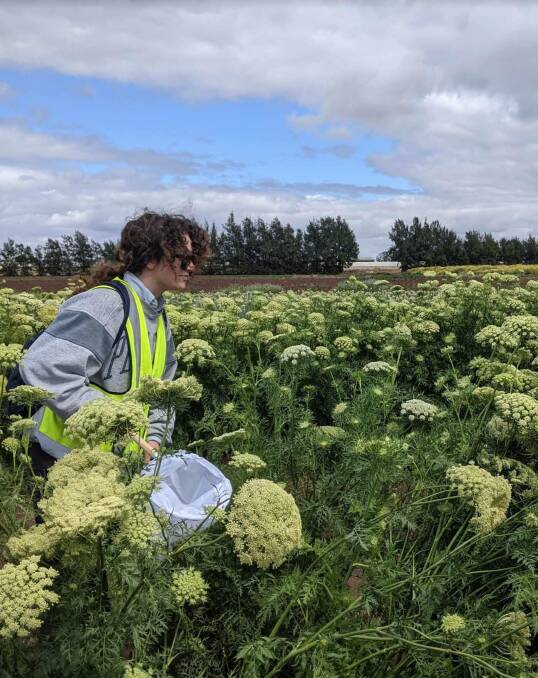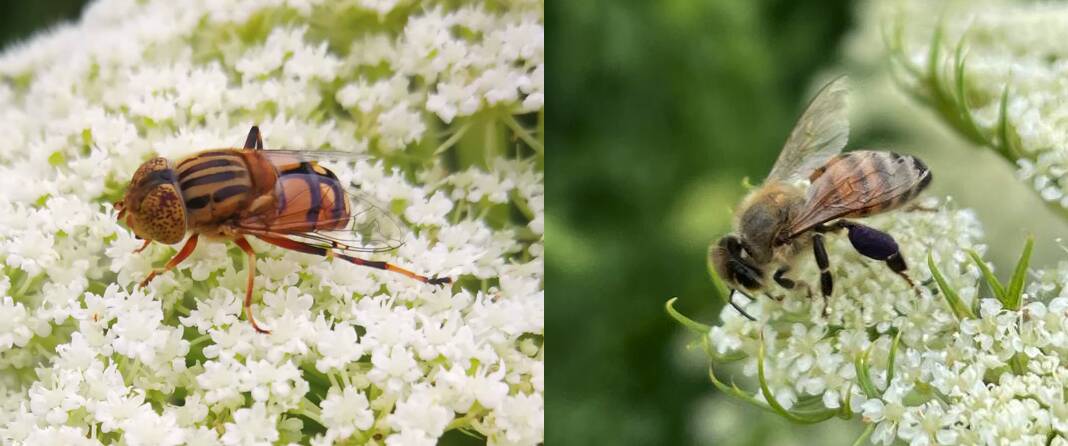
Flies have been found to help fill the gap and share the load with bees in pollination.
Subscribe now for unlimited access to all our agricultural news
across the nation
or signup to continue reading
The managing flies for crop pollination project, funded by Hort Innovation, has been focused on identifying the best fly species for various crops and developing technologies to mass rear the species for commercial use.
University of New England PhD candidate Abby Davis, along with researchers from the University of Western Australia, Western Sydney University and the Western Australia Department of Primary Industries, has been researching the potential for flies to be supplementary pollinators or in extreme cases as alternative pollinators.
"I am testing to see if these fly species can be as effective as manage bees in the cropping systems that we're testing them in, and whether they're able to create quality fruits or vegetable seed that meets commercial standards in the same way that honey bees are doing, or stingless bees in the case of some berries," she said.
Ms Davis had been working with blackberry, raspberry and hybrid carrot seed cropping systems, as well as avocado and mango, and said results had been positive.
"We found that there's a couple species of flies that are actually just as effective as honeybees," she said.
"They don't necessarily outperform them to the extent that they should be definitely used over managed bees, but they are good enough pollinators that if they were working in conjunction with bees we think that there could actually be a chance that these flies could be commercialised and used along with the bees."
Ms Davis said there currently the brown blow fly was commercially available for pollination in Australia, usually sold for small scale indoor farming systems such as vegetable seed or flower seed.
"We tested out this fly in blackberry and raspberry cropping systems and we found that they were able to effectively pollinate blackberry and raspberry when when they were contained in cages," she said.
"They weren't as effective as some other species we were testing but they were still just as good and they can be bought now."
Ms Davis said another effective species was the European drone fly, which was commercialised in Spain.
"There is a couple of companies here who are interested in commercialising this fly species because it's been well it's naturalised in Australia - it's not a native species but it's found all throughout Australia," she said.
"The idea is for it to be used in protected systems - entirely contained within indoor greenhouses or cages."

The most exciting finding for Ms Davis was the results from the golden native drone fly, a native species prevalent throughout Australia.
"We found it deposited like 238% more pollen grains in hybrid carrot systems than the European honey bee," she said.
"It is a beautiful species and we found that it was just a really good pollinator so we're interested in pursuing this fly species further to see if it can be potentially managed as a commercial pollinator."
"It takes a really long time for flies to be managed commercially - there's a lot of research involved."
Ms Davis said the research was important for both honeybees and agriculture as a whole.
"The honey bee is considered the greatest pollinator ever traditionally but because of that we were over dependent on it - we're using it so much and in such high numbers," she said.
"Agriculture is constantly growing and the honeybee itself is facing a lot of stressors, mainly poor nutrition in some protected systems - if they're only allowed to forage on one cropping system then they can actually get some adverse health effects and the colonies of honeybees can die.
"Then there's pesticides and pathogens - the honeybee just needs help, essentially and so if we can find some other insects that can help them out it would be perfect to kind of try to make sure crop yields are maintained and high numbers of pollination services."


